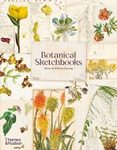About this book
On January 19, 2000, G. Ledyard Stebbins, one of the foremost botanists of the modem age, quietly passed away in his home in Davis, California, as a result of cancer. Born on January 6, 1906, in Lawrence, New York, his life – and scientific career – spanned most of the twentieth century. Stebbins is known for his contributions to varied biological fields, but especially botany, genetics, and evolutionary biology, broadly construed. His publication career, which began in 1929, continued until the very end of his life; he left behind him nearly 300 publications, most of which were scientific in nature, and no less than six books. One of these, Variation and Evolution in Plants, is generally regarded as the single most important book in twentieth century plant evolutionary biology. The book, which synthesized perspectives on plant evolution from a range of disciplines including plant genetics, systematics, population biology, palaeobotany, and plant geography is generally regarded as the synthetic work which brought varied botanical fields into the intellectual event called the evolutionary synthesis. In addition to earning him the status of botanical “architect” of the evolutionary synthesis, the epochal event of twentieth-century biology that accommodated Mendelian genetics within the framework of Darwinian evolution, it also launched the new areas of research known as plant evolutionary biology
In the second half of the century, a period which saw an unsurpassed growth in biological science, Stebbins emerged as a leader – and shaper – of much of evolutionary biology. He wrote popular textbooks that influenced an entire generation of younger biologists, served as tireless organizer and promoter of evolutionary science on an international scale, and helped guide the educational reform movements of the 1960s that saw evolution become the central science of the new unified biological sciences. In his scientific work, he rapidly accommodated to new insights and techniques, contributing significantly to even newer areas of biology. Every inch a “synthesizer,” Stebbins was one of the few notable biologists in the late twentieth century able to bridge the widening chasm between molecular genetics and developmental biology on the hand, and conservation biology and biodiversity studies on the other.
As historians and scientists of the new century look back on twentieth century science, G. Ledyard Stebbins is rapidly emerging as a notable – and unique – figure. To the historian, Stebbins is significant not only for his own considerable contributions, but also for representing a body of scientific work that reflected critical junctures in the recent history of science. His leadership role in the evolutionary synthesis alone ranks him alongside other major figures like Theodosius Dobzhansky, George Gaylord Simpson, and Ernst Mayr. To the scientist, Stebbins’ scientific work has not only historical significance, but continues to speak to practising scientist's concerns. His insights into the importance of hybridization in evolution, for instance, has taken on special significance as biologists recognize the widespread applicability of this process. His long-held search to find a meaningful definition of species continues to elude many practising biologists.
Because his work continues to speak to both scientists and historians, the editors of this volume, a scientist and historian, decided to select some of the more significant papers from Stebbins’ corpus of scientific publications beginning in 1929 in order to make them more readily available to the general reader. They have divided Stebbins’ scientific work into five component parts that they think represent dominant themes in his research: genetic variation and speciation in plants; hybridization; chromosomes and polyploidy; general and plant evolution; and rare species and conservation. Each part is introduced by an analytical essay that they hope draws attention to specific points, or explains the significance of the paper historically and scientifically. They have added a historical introduction to the volume as a way of locating the scientific work within a general historical context and to introduce readers to Stebbins himself. They have tried to enhance the reader’s understanding of the papers with their own commentary, but believe strongly that the papers should ultimately be read – and stand –on their own. That they can do so, speaks to their scientific durability. Readers should also note that the papers selected are just a small sample of a long list of publications (including significant book-length monographs), which the editors provide in the appendix for future reference. Their goals are to introduce a younger generation of scholars to the insights of an important historical figure by showcasing some of his scientific research and to demonstrate that many of the current problems in botany, genetics and evolution have occupied the thoughts of a preceding generation of biologists. Historians have much to leam from the study of science, but so too scientists can leam much from study of their history.
Customer Reviews








































